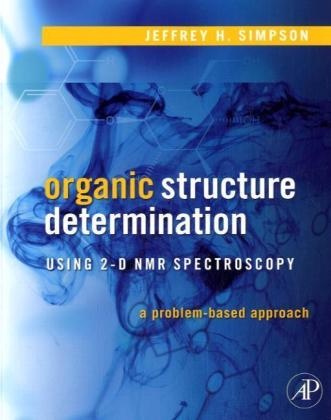Read more
Contains 30-40 quality 2D NMR data sets following an introductory section describing the methodology employed. This book presents strategies for assigning resonances to known structures and for deducing structures of unknown organic molecules based on their NMR spectra. It also contains 20 known and 20 unknown structure determination problems.
List of contents
PART I: Background and Methods
Chapter 1: Introduction
Chapter 2: Instrumental Considerations
Chapter 3: Data Collection, Processing, and Plotting
Chapter 4: 1H and 13C Chemical Shifts
Chapter 5: Symmetry and Topicity
Chapter 6: Through-Bond Effects: Spin-Spin (J) Coupling
Chapter 7: Through-Space Effects: the Nuclear Overhauser Effect (NOE)
Chapter 8: Molecular Dynamics
Chapter 9: Strategies for Assigning Molecules
Chapter 10: Strategies for Elucidating Unknown Molecular Structures
PART II: Problems
Chapter 11 Simple Assignment Problems
Chapter 12: Complex Assignment Problems
Chapter 13: Simple Unknown Problems
Chapter 14: Complex Unknown Problems
Report
"I like [the book] a lot. Books that cover theory in depth AND lots of problems are (surprisingly) rare."--Steven M. Graham, St. John's University "The abundance of problems and highly detailed glossary are especially noteworthy; the quality of the spectrum presentations is excellent [...] Overall organization works well, and the layout and other 'production values' are what one has long come to expect from [Academic Press]."--Barry Shapiro
"When trying to explain two-dimensional nuclear magnetic resonance (NMR) spectroscopy, one may strive to avoid two pitfalls: getting bogged down in the mathematics behind the technique, or skipping the mathematics altogether and by default making the technique a "magic box." In his book, Simpson (MIT) has nearly done the impossible, covering two-dimensional NMR without slipping into either of those problems. Starting off with the instrumental setups and working through topics such as pulse sequences and spectral interpretation, this book gives readers all that they will need to prepare, run, and interpret a 2-D NMR experiment. This work would be useful for anyone who is currently using 2-D NMR and is a must for newcomers to the technique. Simpson provides almost 100 spectra to interpret as exercises, which make this volume an ideal teaching tool for 2-D NMR spectroscopy. Summing Up: Essential. Upper-division undergraduate through professional collections."-- S. S. Mason, Mount Union College writing CHOICE April 2009

